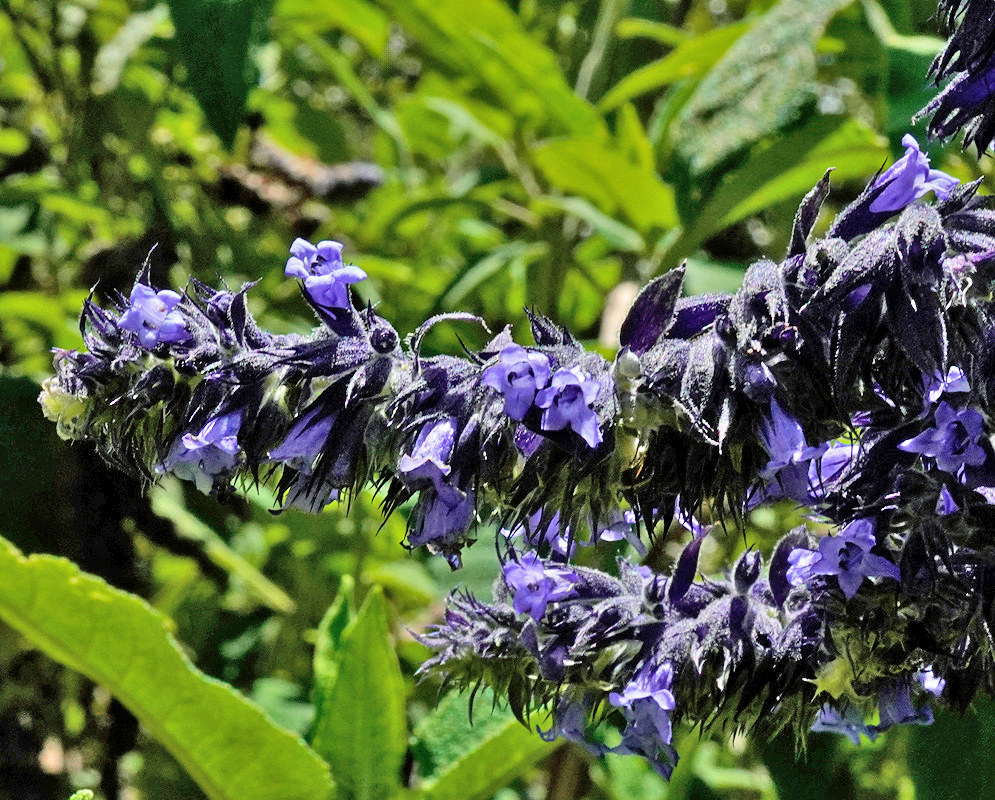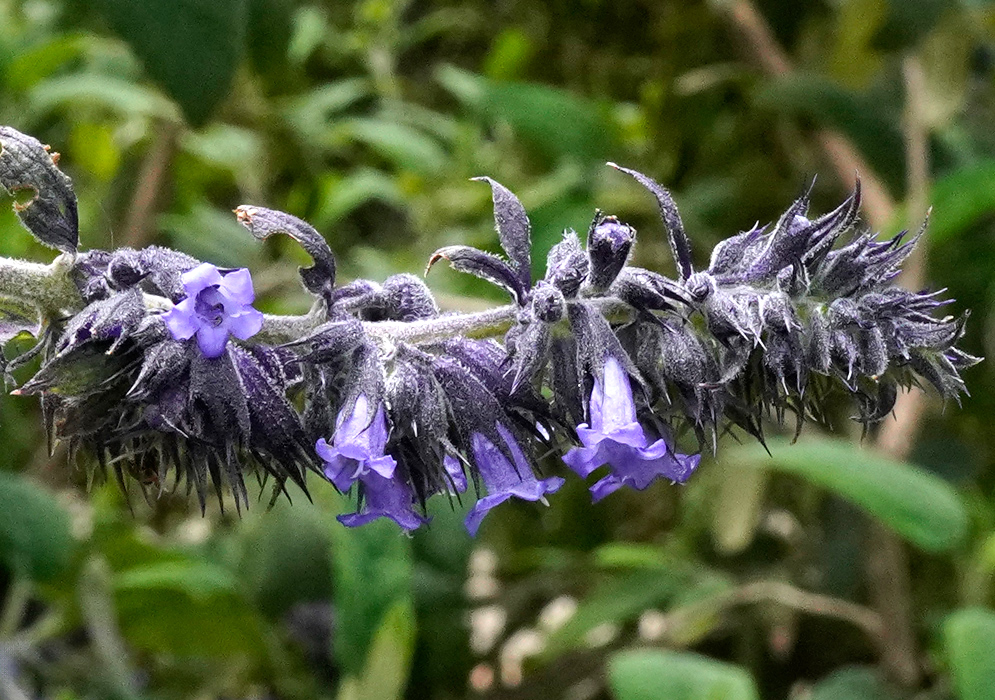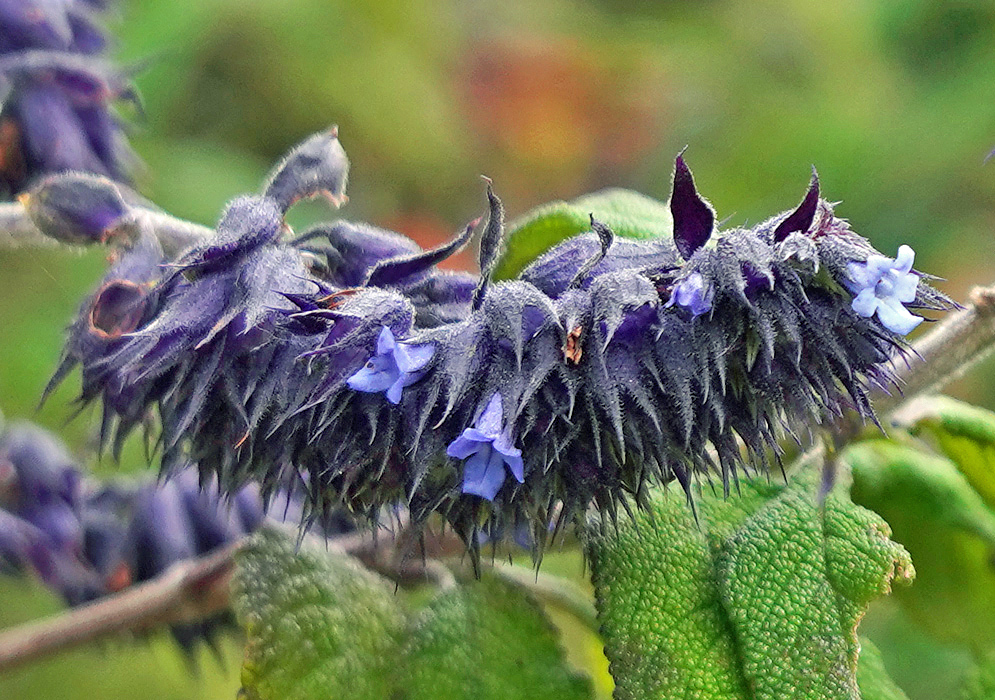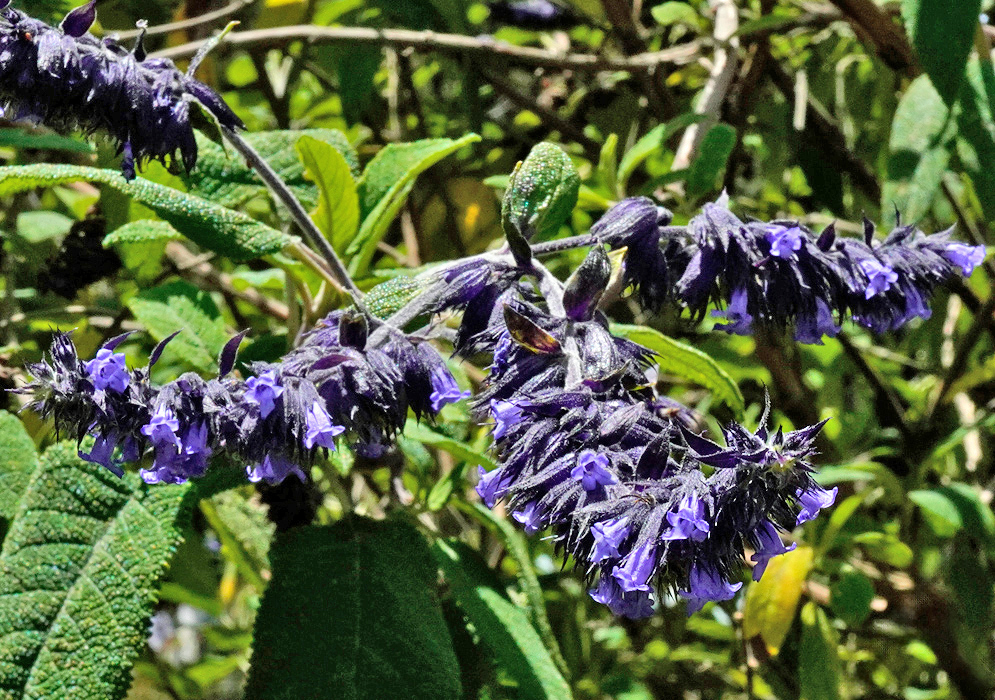This post has 11 Simple Fields-fields attached. Show fields.

Lepechinia salviifolia is native to the Andean regions of Colombia and Ecuador, particularly thriving in montane and subparamo habitats at elevations typically between 6,500 and 11,500 feet. It grows as a woody shrub. The inflorescences are distinctively curved or arched terminal spikes densely packed with small, tubular flowers that emerge from dark, velvety calyces covered in glandular trichomes. Each flower is bilabiate, with a pale blue to bluish-lavender corolla, the upper lip hooded and the lower lip three-lobed and spreading, sometimes with faint veining near the throat. The flowering structures are covered in short hairs, giving the spikes a woolly appearance. It has traditional medicinal use in Andean communities where leaf infusions are reportedly used for respiratory conditions and digestive discomfort; however, these applications lack formal pharmacological validation.







